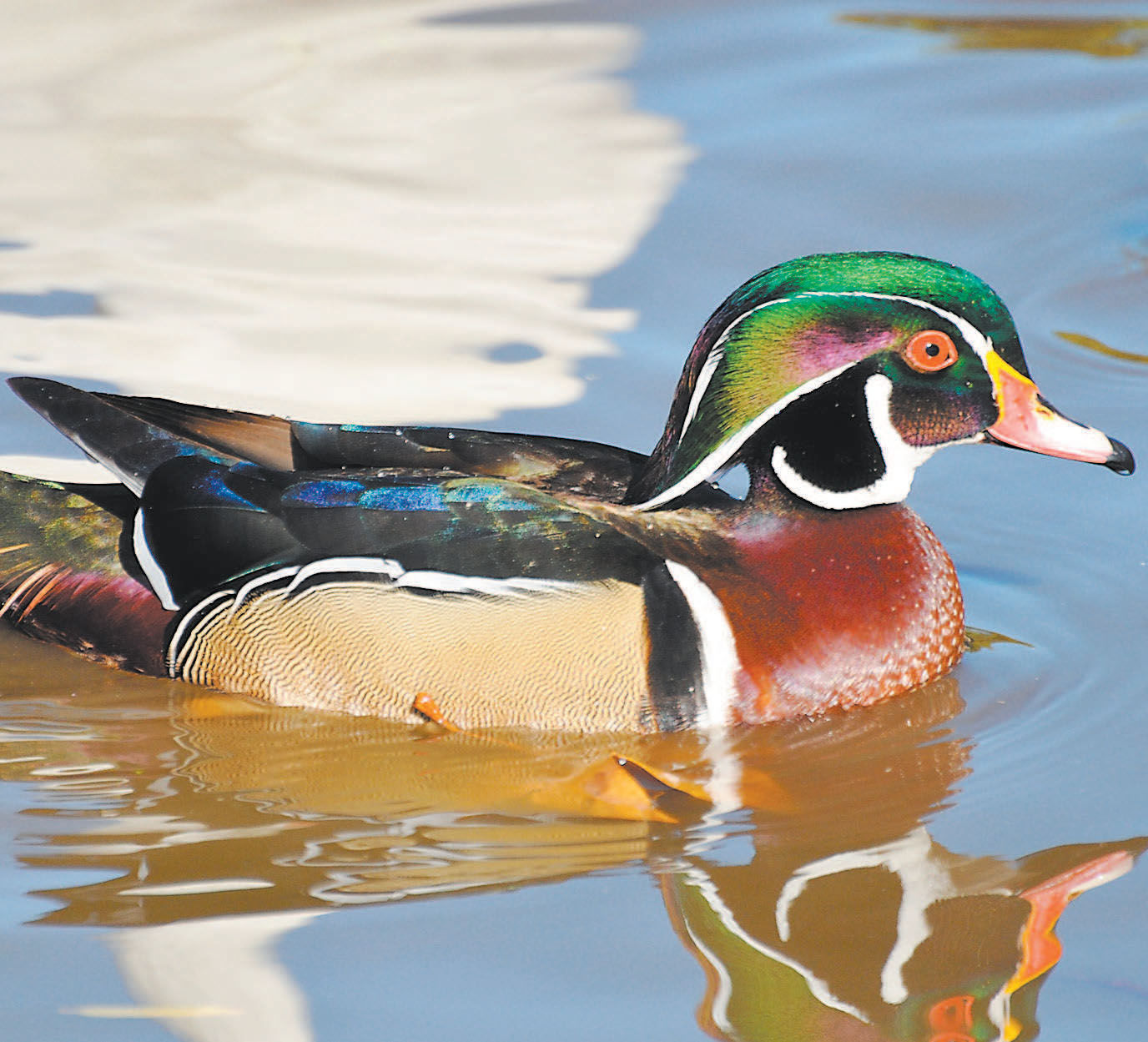
Earnest Sims
November 18, 2015Ellender fires Terry Washington
November 18, 2015Black specters already whistled through the darkness over our heads as we tied the boat to some overhanging brush and tossed out four wood duck decoys in this oxbow lake.
Just as shooting hours began, several twisting, whistling shapes materialized beneath the treeline and raced along the ancient channel. We fired at waves of phantoms flashing over us. More birds hurtled past us or whistled through the trees. For the next 15 minutes, we couldn’t load our shotguns fast enough as ducks suddenly appeared and vanished.
While watching other birds rocket through nearly impenetrable cypress tree canopies, four ducks suddenly appeared just above our tiny decoy spread. We turned quickly, unleashing six rounds of Number 6 Hevi-Shot, dropping three wood ducks. We cupped our hands around our glowing shotgun barrels to warm our fingers.
Almost as suddenly as the morning flight began, it ended. The sun had not yet cracked the horizon. Only the distant staccato hammering of a pileated woodpecker chiseling for his breakfast somewhere in the swamp punctuated the stillness. We put down our shotguns and rigged fishing rods.
Perhaps the most beautiful waterfowl in North America, wood ducks can provide fast shooting at times. One of the few ducks that can land in trees, woodies rely heavily upon woodpecker holes or other cavities in tree trunks for nesting. Extensive logging of ancient trees in the late 19th and early 20th centuries decimated wood duck populations across eastern North America.
To supplement natural cavities, many individuals and organizations built artificial nesting boxes in suitable wood duck habitats in the past few decades. Those efforts paid off. The colorful speedsters rebounded remarkably and now rank among the most regionally common ducks in the Mississippi and Atlantic Flyways, second only to mallards in many areas.
Although sportsmen occasionally bag woodies in fresh to brackish marshes, the multihued birds prefer quiet bayous, oxbow lakes, sloughs, swamps, green-tree reservoirs, beaver ponds and any other sluggish freshwater systems lined with hardwoods. They occur in lakes and swampy places throughout Louisiana, such as the Atchafalaya Basin, Manchac Swamp around Lake Maurepas, the Pearl River Wildlife Management Area near Slidell and any place where hardwood trees meet fresh water.
Most woodies live out their lives
in their home swamps, but some migrate. When states farther north freeze, many woodies head south to supplement the resident population in the Bayou State. After a good cold front, Cajun sportsmen might see a lot more whistling woodies flying over their favorite spots than before the front.
While wood ducks thrive throughout Louisiana north of the marshes, sportsmen still need to find them to hunt them. Wood ducks typically follow the same flight patterns each morning and evening, but the flights may only last a few minutes. The evening flight typically occurs after shooting hours.
“Early in the morning, wood ducks leave their roosting areas to fly to feeding areas and return after sundown,” explained David Hayden, a duck hunter and retired waterfowl biologist.
“On cloudy days, they often move just before sunset. Since woodies typically fly the same patterns every day and seldom stray far from home, sportsmen who do their scouting often enjoy incredible, albeit brief, shooting under a good flight path at first light.”
If sportsmen can find where wood ducks want to feed or rest in the morning, they can usually enjoy incredible action for a short time. That requires frequent and extensive scouting. Look for places where woodies find good shelter away from predators or hunters and sufficient food sources. Listen for whistling ducks since sound carries long distances on still mornings.
“People need to do their homework to bag wood ducks,” recommended Cody Young, a waterfowl hunter. “When hunting woodies, sportsmen need to be where the duck wants to be. Nobody is going to convince a wood duck to go where it doesn’t want to go. It’s all about scouting. If someone can figure out what the ducks are eating and where, they can find them and hunt them.”
Woodies eat various nuts, berries, fruits, wild grasses, sedges and seeds, but above everything else, they relish acorns, more specifically, white oak acorns. Find white oak acorns over or near water and sportsmen will find woodies. These dabbling ducks frequently feed where overhanging oaks drop their precious load into shallow water. An oak ridge bordering a backwater slough could create an excellent place to ambush woodies.
“When looking for wood ducks, I generally stay off the big waters,” Young advised. “I get in a back pocket, slough, old oxbow lake or something like that. Sometimes, the smaller the water, the better the action. Don’t overhunt a spot. Never hunt the same spot two days in a row. People need to find several places where they can hunt. If they hunt one spot too often, that will chase birds from that area.”
Many sportsmen hunt woodies from small boats. Some use pop-up boat blinds, but in the right spot, hunters don’t really need any blinds at all. Simply hide the boat against a dark background and remain motionless. Cover any bright objects, like outboard motors or gasoline cans, with camouflaged or dark material. Position boats against bushes or trees with water toward the front. This allows better visibility and shooting. Some hunters prefer to park a boat and walk some distance from it to hide in natural cover.
The morning hunt typically lasts for 15 to 30 minutes and may cease before sunrise. By the time ducks can see a boat in the dim light, the morning flight probably ends anyway. However, hunters often don’t see woodies in low light conditions either until the last second. Therefore, sportsmen must spot and identify targets quickly and fire before birds disappear behind trees or other cover.
Wood duck hunters can use decoys, but really don’t need them in the right spot. At worse, a few wood duck, teal or mallard decoys won’t hurt. When a wood duck wants to land, it’s going to land. Unlike mallards, that frustratingly circle and circle before helicoptering down into a timbered pothole, a wood duck crash-lands wherever it wishes like a kamikaze. When using decoys, don’t overdo it. Just use two to six decoys and place them in pairs.
“A few decoys helps, but if someone is where wood ducks want to land anyway, that’s where they are going to land regardless of the decoys or no decoys,” Young explained. “They do respond to some calling, but it’s not like calling in a flock of mallards. Sometimes, they’ll respond to whistling and turn. At other times, they won’t.”
After the initial morning rush, many people quit for the day, but if sportsmen can find a duck sanctuary, they might enjoy longer action. After sunrise, wily woodies seek the thickest cover they can find to hide from predators and people. If undisturbed, they might remain there, resting and feeding until ready to make the evening flight back to the roost.
Since wood ducks and gray squirrels frequently share the same habitat, some people turn their attention to bushytails after sunrise. Others go fishing. While squirrel hunting or fishing, people can usually scout for more duck holes.
‘Wood ducks can provide fast shooting at times.
One of the few ducks that can land in trees, woodies rely heavily upon woodpecker holes or other cavaties in tree trunks for nesting.’
John Felsher
Cajun Sportsman contributor
Wood ducks (like pictured) are fun hunts during Louisiana’s autumn months. According to Cajun Sportsman contributor John Felsher, the birds are active in the Houma-Thibodaux area.
Wood ducks roam Louisiana’s skies throughout the autumn. John Felsher said the ducks are easy to see locally this time of year.












